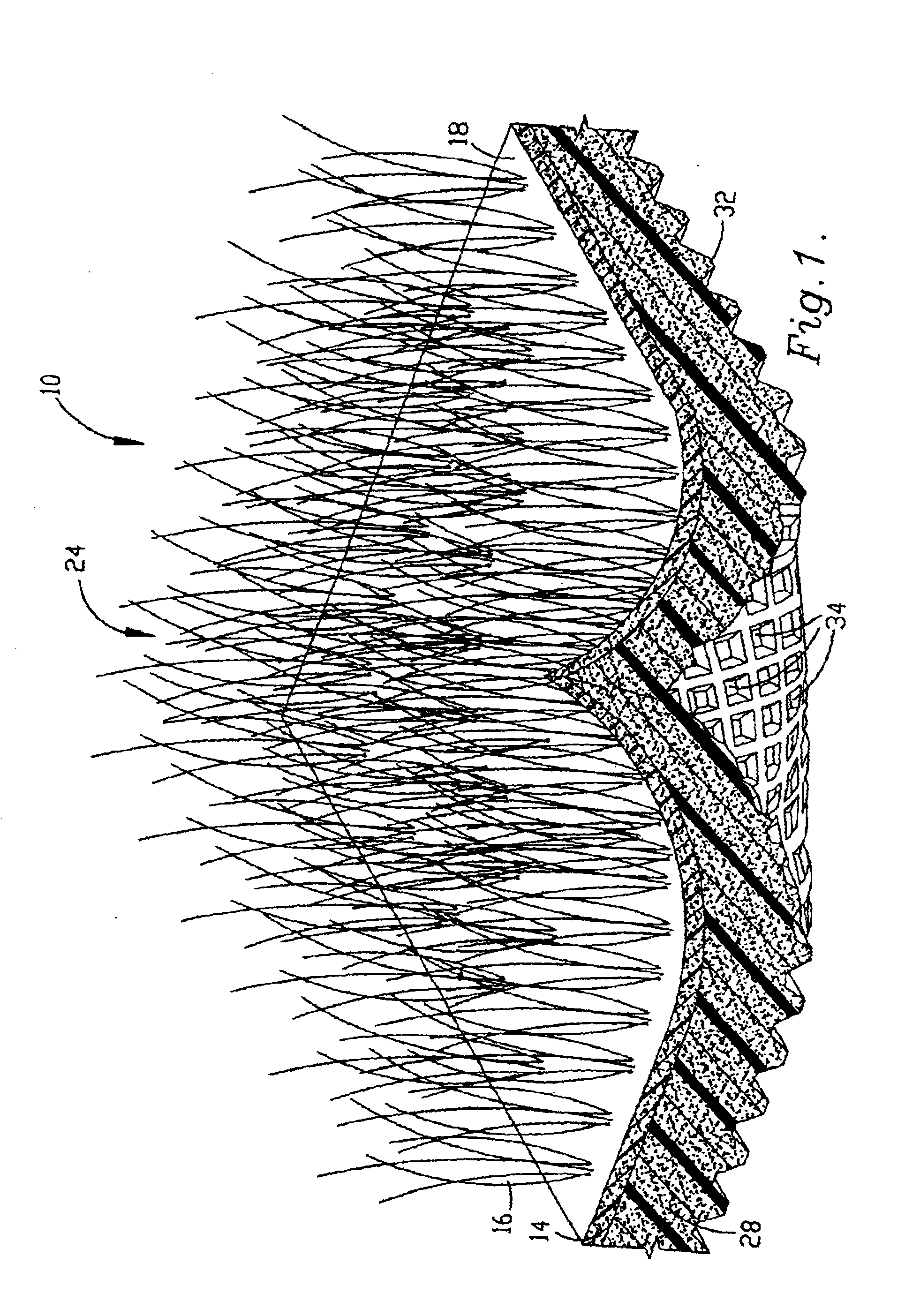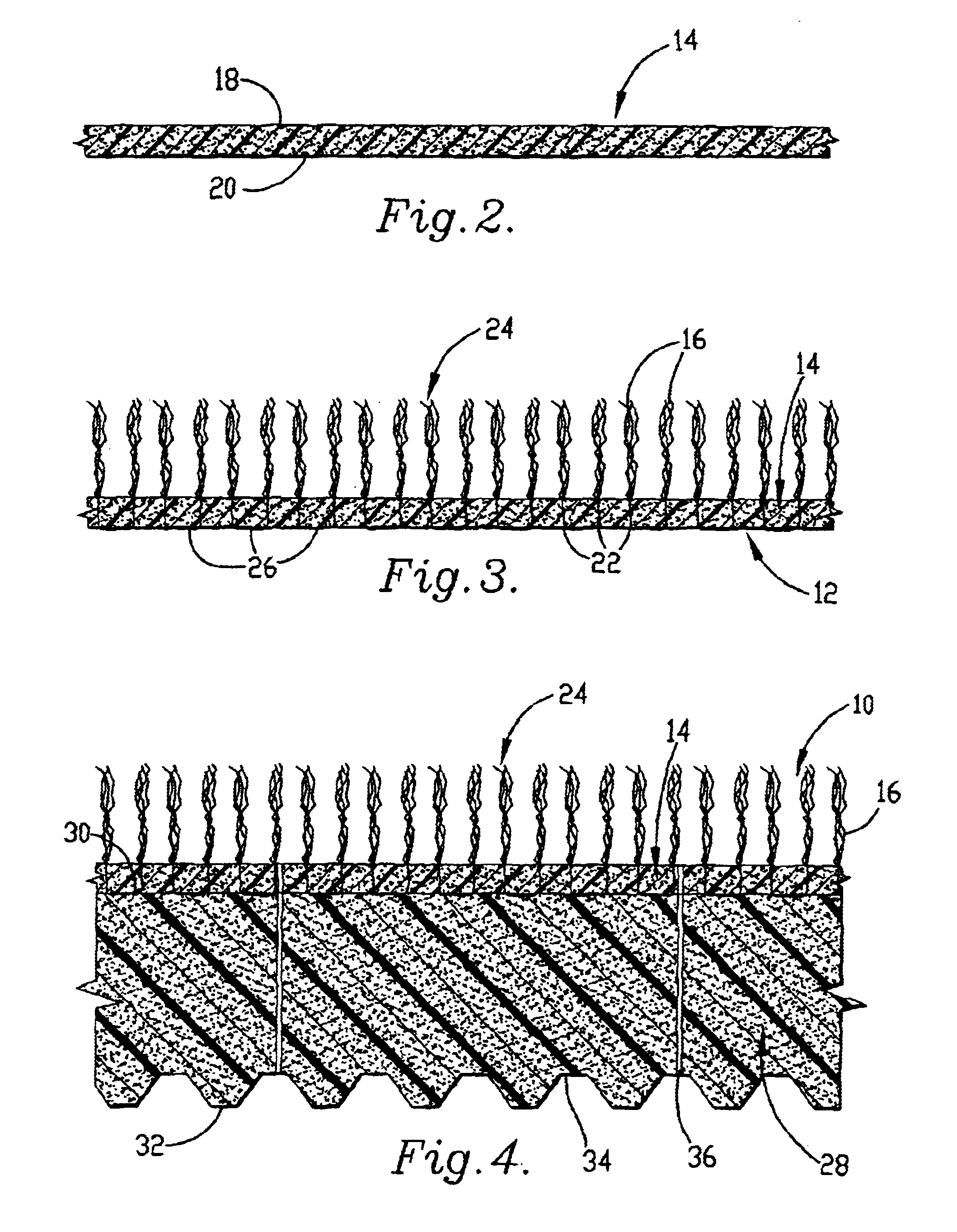Tufted surface covering and method
a surface covering and tufted technology, applied in the field of improved tufted surface covering and method, can solve the problems of damage to the covering, dispersion of force affecting the traction and torque characteristics of the covering, and not functionally equivalen
- Summary
- Abstract
- Description
- Claims
- Application Information
AI Technical Summary
Benefits of technology
Problems solved by technology
Method used
Image
Examples
Embodiment Construction
A golf practice mat having a tufted first layer and a second layer is prepared as follows:
A First Batch Mix is prepared by mixing:
9.0 parts by weight mixed recycled particles of NBR, SBR and EPDM
1.0 part by weight mixed PVC and EPDM
0.5 parts by weight diisononyl phthalate
0.2 parts by weight trinonylphenolphosphate
0.175 parts by weight talc
0.12 parts by weight tinuvin
A slurry is prepared by mixing:
10.0 parts by weight First Batch Mix
0.125 parts by weight sulfur
0.1 part by weight stearic acid
4.0 parts by weight carbon
0.05 parts by weight diisononyl phthalate
0.5 parts by weight zinc oxide
2.5 parts by weight azodicarbonamide
The slurry is poured into a 20 mm deep form and passed through a press at 160.degree. C. and 1.5 tons per square inch pressure to form a first layer.
The cured first layer is needle tufted on a tufting machine with a polyamide yarn fiber manufactured by Dupont under the trademark Antron.RTM..
The tufted mat is placed face down in a roller press heated to 160.degree. C....
PUM
| Property | Measurement | Unit |
|---|---|---|
| temperature | aaaaa | aaaaa |
| particle size | aaaaa | aaaaa |
| sizes | aaaaa | aaaaa |
Abstract
Description
Claims
Application Information
 Login to View More
Login to View More - R&D
- Intellectual Property
- Life Sciences
- Materials
- Tech Scout
- Unparalleled Data Quality
- Higher Quality Content
- 60% Fewer Hallucinations
Browse by: Latest US Patents, China's latest patents, Technical Efficacy Thesaurus, Application Domain, Technology Topic, Popular Technical Reports.
© 2025 PatSnap. All rights reserved.Legal|Privacy policy|Modern Slavery Act Transparency Statement|Sitemap|About US| Contact US: help@patsnap.com



